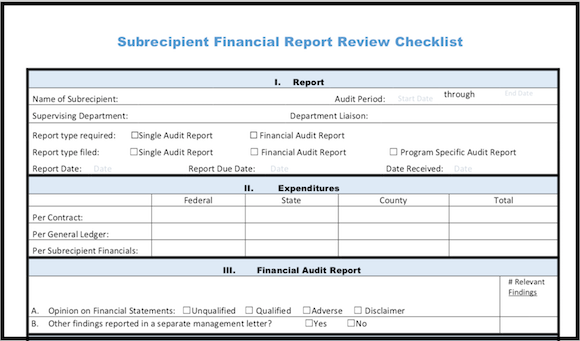|
In our last blog post, we explained the six preparation steps for inventorying capital assets. In this blog post below are a few observation points to consider when conducting physical inventory of capital assets.
The only challenges usually are a) to identify all the line items in the capital asset records that relate to a building so that they can be observed together, and b) to determine whether you will try to observe each component of the building. In other words, will you consider all components of the building observed when you see a building that is being utilized? You may be able to observe buildings via review of aerial photographs.
Be creative on ways to prove the existence of assets. Remember that a capital assets physical inventory is not “observation” so much as “proof of existence/ownership.”
I have seen observers spend inordinate time during the observations chasing discrepancies such as which department “owns” the asset, the asset’s gross book value, the asset description, reconciling capital asset records to department records, or linking as asset to its parent asset. When these issues come up, I suggest you note them in the count sheet (click the link to view and download in Excel-format) for follow up after the observation is over. It is important to get the observation done. Analyzing which items are worthy of follow up is better done when all the discrepancies can be looked at as a group.
When you are keeping the points above in mind when your agency is conducting a physical inventory of capital assets, the process can be expected to go more smoothly.
Please also visit our Resources page for a collection of all of our attachments and templates, as well as a link to a recent presentation for inventorying capital assets.
If you have more questions related to inventorying capital assets, feel free to reach out to Kevin directly:
Kevin Harper, CPA kharper@kevinharpercpa.com (510) 593-503
If you'd like to get more free tips, as well as downloadable tools and templates for your agency, please join our mailing list here!
(We’ll send you a monthly curated selection of our blog posts. You can unsubscribe at any time.) |
The Government Finance and Accounting BlogYour source for government finance insights, resources, and tools.
SEARCH BLOG:
Meet the AuthorKevin W. Harper is a certified public accountant in California. He has decades of audit and consulting experience, entirely in service to local governments. He is committed to helping government entities improve their internal operations and controls. List of free Tools & Resources
Click here to see our full list of resources (templates, checklists, Excel tools & more) – free for your agency to use. Blog Categories
All
Need a Consultation?Stay in Touch! |
Search Across Entire Site:
HELPFUL LINKS:
|
461 2nd Street, #302
San Francisco, CA 94107 (510) 593-5037 KHarper@kevinharpercpa.com |





 RSS Feed
RSS Feed